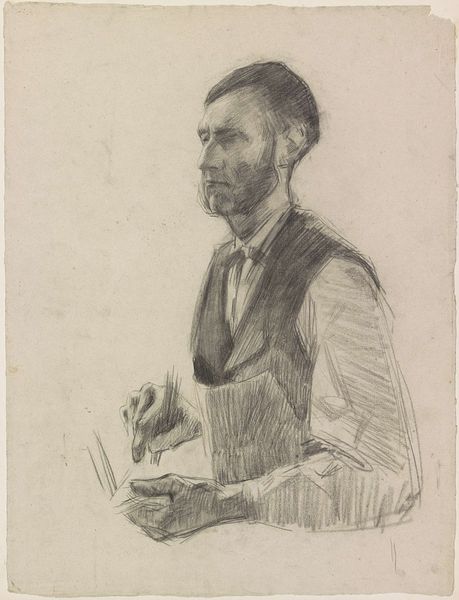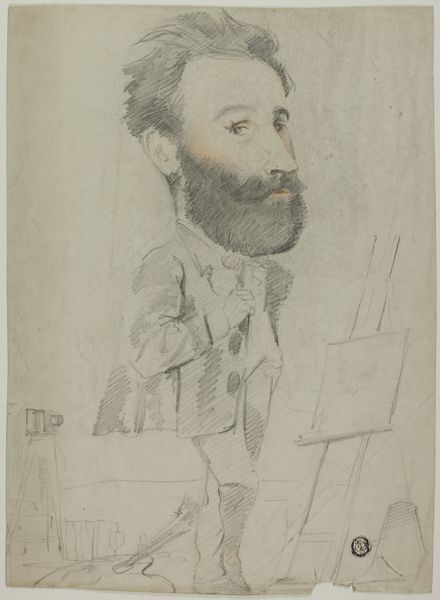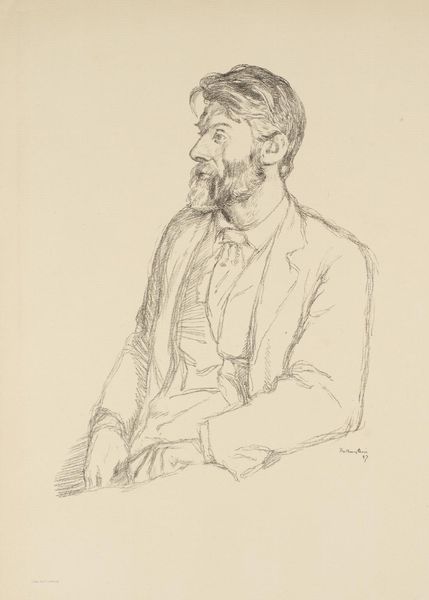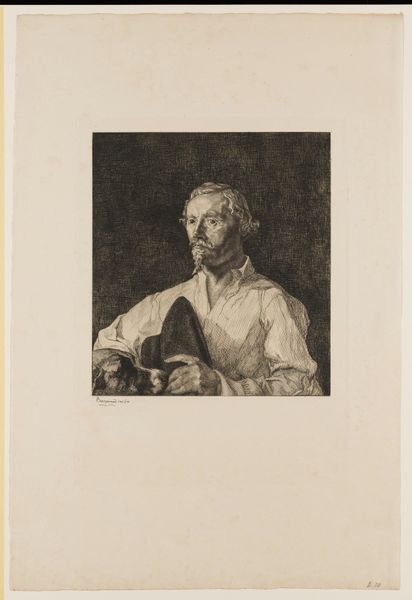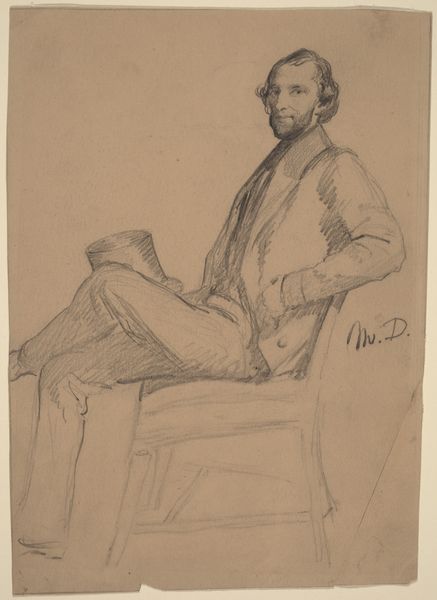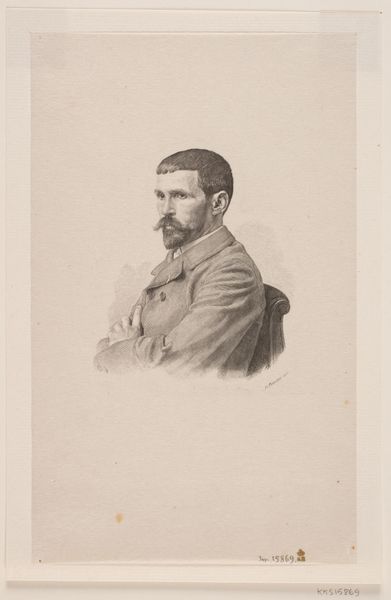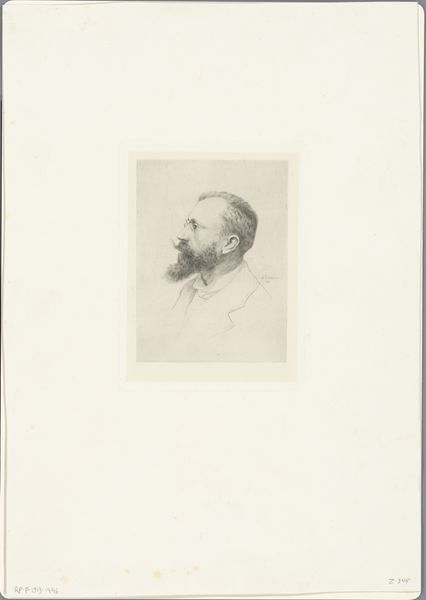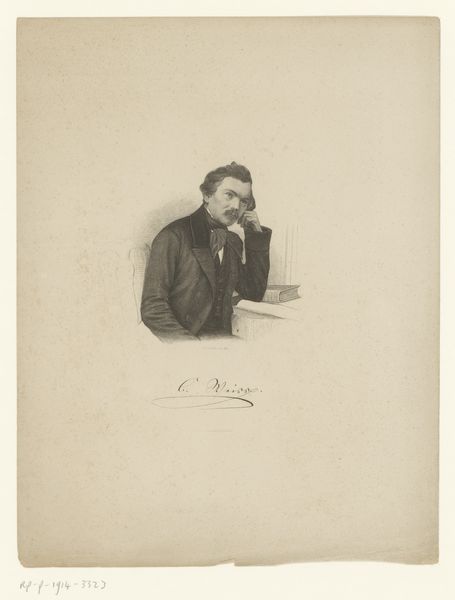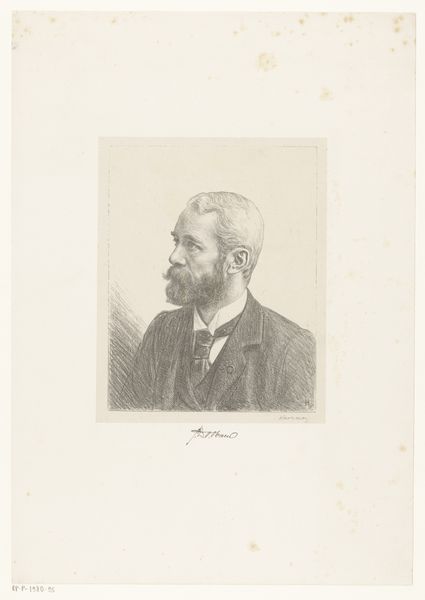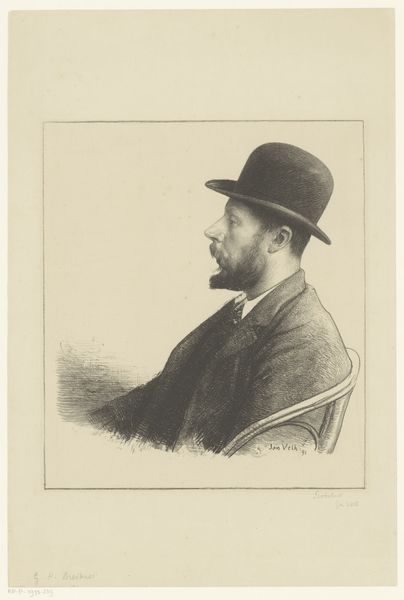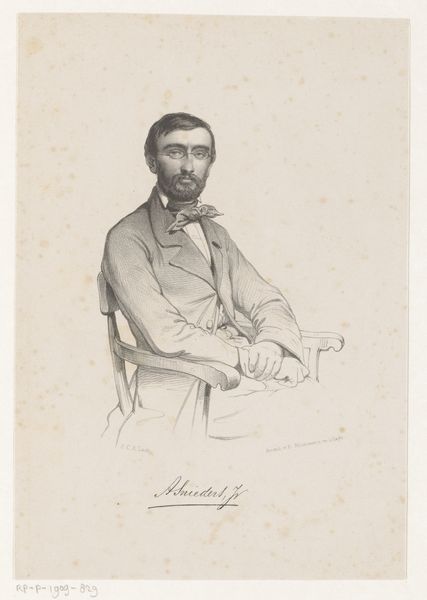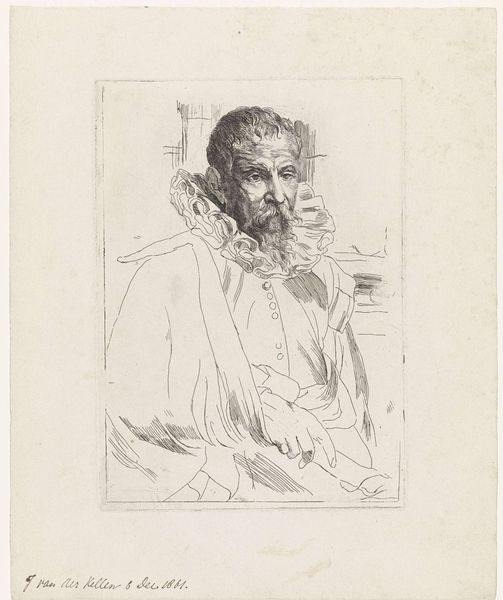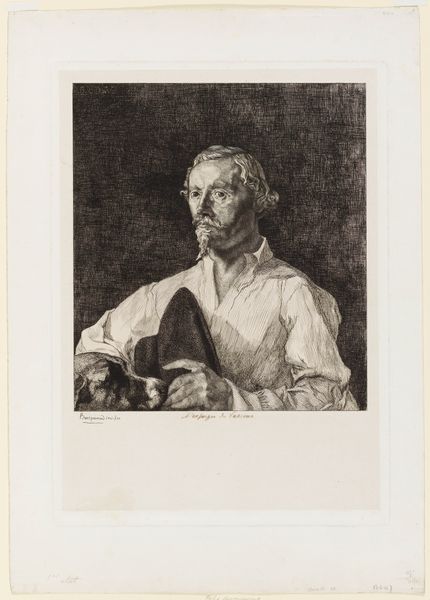
drawing, pen
#
portrait
#
drawing
#
dutch-golden-age
#
impressionism
#
caricature
#
portrait reference
#
pen
#
portrait drawing
#
realism
Dimensions: height 323 mm, width 263 mm
Copyright: Rijks Museum: Open Domain
Editor: This is Anthon van Rappard’s "Blind Brushmaker" from 1890, created using pen. It's a stark and honest portrait. The cross-hatching gives it a rough, almost unfinished quality that somehow emphasizes the man's vulnerability. How do you interpret this work, especially considering Rappard's social consciousness? Curator: It’s a powerful depiction. Beyond the visible vulnerability, consider the socio-political context. Rappard, a realist, was deeply concerned with the plight of the working class. This isn't just a portrait; it's a social commentary. What does the man’s blindness, coupled with his profession, suggest about the economic realities and opportunities afforded to marginalized individuals at the time? Editor: That he's limited, obviously, maybe exploited even. But Rappard chose to depict him working. Doesn't that suggest resilience, too? A refusal to be entirely defined by his disability? Curator: Precisely. The act of brushmaking, typically requiring precise visual acuity, becomes an act of defiance, a testament to human agency within oppressive systems. Think about how the style-- realism rather than idealization—reinforces the work’s authenticity. It is not sentimental but resolute. How does the use of pen and ink, a relatively accessible medium, play into this narrative of the everyday person and the working class? Editor: It feels immediate, less formal, like a snapshot of real life rather than a grand statement. Maybe the accessibility of the medium mirrors the artist's desire to connect with the common person. Curator: Exactly. Rappard’s "Blind Brushmaker" isn't just about one man; it's about a system that marginalizes and the strength of those who resist it. Art can confront uncomfortable truths. Editor: I never thought about it that way, as resistance! Thanks for illuminating all of this. Curator: It’s about continually asking what art does and who it serves.
Comments
No comments
Be the first to comment and join the conversation on the ultimate creative platform.
